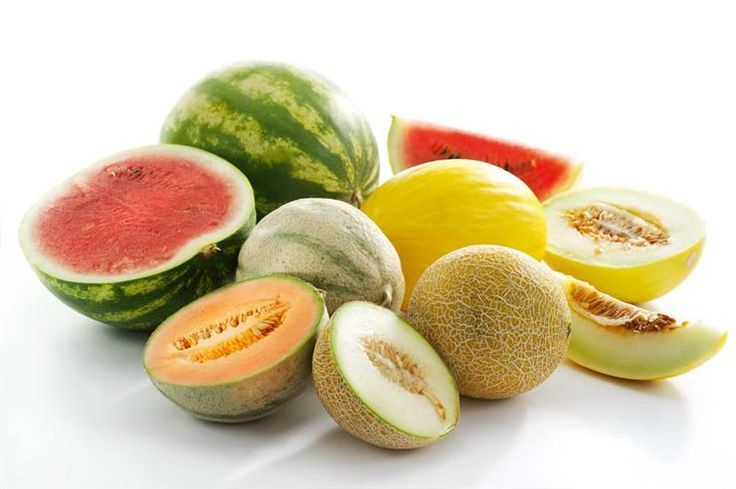Melon - A Cool, Delicious Treat When the Weather Gets Hot
TEXARKANA, Ark. –
Nothing tastes better on a hot summer day than a sweet, juicy melon. Melons of all kinds are a cool, delicious treat when the weather gets hot. When you hear the word “melons”, you may think of watermelon, but actually the melon family is large and its best known members are the cantaloupe, watermelon and honeydew.
Cantaloupe is a low calorie, fat free food that provides about 48 calories per cup and is a good source of Vitamin A and C. When choosing cantaloupe, the stem should not be attached; instead, there should be a slight cavity at the end of the melon. It should have course outstanding netting on the rind with a light green, gray, buff or yellow coloring between the netting.
Other than sight, aroma is the other factor to check for when selecting a cantaloupe. If a pronounced, fruity aroma is not evident, try gently mashing the stem cavity with your fingernail. If the characteristic aroma still isn’t present, the melon probably isn’t ready to be eaten.
Cantaloupes do not continue to ripen once picked from the patch and will not be sweet. You also don’t want an overripe cantaloupe. Look for softening of the entire rind and soft watery flesh. Small bruises will not usually hurt the flesh, but large bruised areas should be avoided, since they generally cause soft, water-soaked areas underneath the rind.
Proper storage of your cantaloupe is important. Uncut cantaloupe can be stored at room temperature. Once cut, keep cut melon slices and pieces in the refrigerator (or on ice, in the case of a picnic, etc.) until consumed. Whole melons should be cleaned thoroughly with tap water before cutting and care should be taken to cut melons with clean utensils on clean surfaces.
Watermelons often make appearances at picnics and cookouts. They provide good amounts of Vitamins A and C, yet they only have about 42 calories per cup.
Opinions vary on how to choose a ripe watermelon. There are those who prefer to thump the melon to hear a dull sound and then there are those who judge by size and weight.
Watermelons should reach the market still wearing its stem. There are clues to inner quality, though not fool proof ones. Look for a relatively smooth surface, neither shiny nor dull, but with a waxy, live appearance. The ends of the melon should be well rounded and the underside (where it sits on the ground) should be creamy white. Late in the season, melons with very dull rinds are likely to be overripe.
Size is an important consideration since larger melons have a greater proportion of flesh in relation to the amount of rind than smaller ones.
Cut watermelons are fairly easy to judge by appearance. Whether red or yellow meated, those with firm, juicy flesh with a deep color, free of white streaks, will be juiciest and sweetest. Seeds of ripe melons are dark brown or black. Pass up melons with pale-colored flesh, a white heart, or whitish seeds. These are all signs of immaturity. Over mature or old melons exhibit dry, mealy or stringy looking flesh.
Whole melons should be cleaned thoroughly with tap water before cutting and care should be taken to cut melons with clean utensils on clean surfaces. Once cut, watermelons will keep original flavor and texture up to a week in the refrigerator if kept in a sealed container. Since cut edges lose quality first, it’s a good idea to leave “peeled” watermelon in sections as large as storage containers will allow.
Keep cut melon slices and pieces in the refrigerator (or on ice) until consumed.
I love melons in their true state, fresh from the farmers market. This melon fruit salad is colorful and easy to make and is sure to add style and taste to your menu.
Melon Cooler
2 cantaloupes, halved
1 to 1 1/2 cups watermelon balls
1/2 cup seedless green grapes, sliced
1/2 cup fresh blueberries
Scallop edges of cantaloupe halves. Combine remaining ingredients, tossing gently. Spoon into cantaloupe halves. Yield: 4 servings.
By Carla Haley-Hadley
County Extension Agent - FCS
The Cooperative Extension Service
U of A System Division of Agriculture
Media Contact: Carla Haley-Hadley
County Extension Agent - FCS
U of A Division of Agriculture
Cooperative Extension Service
400 Laurel Street, Suite 215 Texarkana AR 71854
(870) 779-3609
chadley@uada.edu
Related Links
The Arkansas Cooperative Extension Service is an equal opportunity institution. If
you require a reasonable accommodation to participate or need materials in another
format, please contact your County Extension office (or other appropriate office)
as soon as possible. Dial 711 for Arkansas Relay.
Pursuant to 7 CFR § 15.3, the University of Arkansas System Division of Agriculture
offers all its Extension and Research programs and services (including employment)
without regard to race, color, sex, national origin, religion, age, disability, marital
or veteran status, genetic information, sexual preference, pregnancy or any other
legally protected status, and is an equal opportunity institution.
